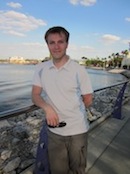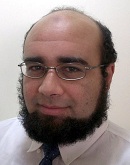Keynote speakers
All keynotes are sponsored by the New South Wales Government Trade & Investment Centre.
- Dr. Lauri Wirola, Nokia Location & Commerce Business Unit, Tampere, Finland

Lauri Wirola, Dr.Tech., received his Master of Science degree in 2005 and Doctor of Technology degree in 2010 both from Tampere University of Technology, Finland, in electrophysics. Dr Wirola has worked with Nokia since 2001 and currently works as a system designer in Nokia Location & Commerce business unit. His current interests include distributed computing and database architectures for global GNSS and wireless positioning services. Dr Wirola has published widely on the Assisted GNSS technologies and is an inventor in tens of granted patents and patent applications in the positioning services domain.
Abstract: The history of the location services (LCS) standards in the wireless networks dates back to mid-90's, when the first positioning standards were drafted for GSM networks. Over the last 20 years the LCS standards have played an indispensable role in the mass-market uptake of location technologies. Just one example of the fruits of this work is laying the foundation for Assisted GPS technologies of which descendants are in every smart phone today. Over the recent years the wireless location standards have gone through a revolution. The ever-growing GNSS family has also led to evolution in the location standards - not only in terms of new satellite systems, but also in terms of completely new GNSS-based positioning methods. Moreover, the emphasis has moved more and more towards non-satellite based technologies including those targeted at indoor positioning and related architectures. My intention is to shed light on some of these latest developments in the location services standardization with particular emphasis on those relevant for indoor positioning.
- Prof. Gordon Wyeth, Queensland University of Technology, Brisbane, Australia

Gordon F. Wyeth is Head of the School of Electrical Engineering and Computer Science and Professor of Robotics at the Queensland University of Technology. Prior to 2010 he was at the University of Queensland where he was co-Director of Mechatronic Engineering. Professor Wyeth’s main interests are in spatial cognition and biologically inspired robotics, with more than 150 papers published in leading journals and conferences. He has served as President of the Australian Robotics and Automation Association 2004–2006, chaired the Australasian Conference on Robotics and Automation in 1999, 2004 and 2011, chaired the IEEE Robotics and Control Systems Queensland Chapter 2010-2011, and is currently a reserve member of the ARC College of Experts.
Abstract: If you see a rat scuttling through your backyard, you might want to stop and consider the superiority of the rat at creating and exploiting spatial representations compared to the most advanced robot. Chances are that the rodent you see has a nest that is many hundreds of metres, possibly kilometres, from your backyard, and yet the rodent can unerringly return to its home. If your yard has some ripe seed or fruit, the rat may return at some later date, further demonstrating the rat’s ability to store and recall the spatial layout of its range. The rat runs under leaves and through drains with few clear landmarks in a world that is under constant perceptual change in terms of appearance, texture and odour. Clearly, the rat can build a map over large ranges in a real world environment under constant change, and use and maintain that map over its two to three year lifetime. In our work, we have sought to build a model of the rodent brain that is suitable for practical robot navigation. This talk will describe how our model, RatSLAM, captures ideas from biology in a fashion suitable for implementation on a robotic platform, and how its successor CAT–SLAM builds on those capabilities. I will outline the performance of both systems in difficult robot navigation challenges, demonstrating how a cognitive robotics approach to navigation can produce results that rival other state-of-the-art approaches in robotics.
- Dr. Waleed Kadous, Software Engineer, Google, Mountain View, California

Dr Waleed Kadous leads Google's indoor location and indoor maps acquisition efforts. Prior to his work on indoor, he helped Google to significantly enhance the maps it serves to tens of millions of users. He completed his PhD at UNSW in 2002 and was a Senior Research Fellow at the Smart Internet Cooperative Research Centre, and then at the ARC Centre of Excellenece in Autonomous Systems.
Abstract: For more than a decade the academic world has been producing viable solutions for indoor positioning and navigation. What then, is preventing it from reaching a tipping point, and being part of the public ? One of the issue is that to deliver complete end-to-end solutions there are many parties involved: sensor manufacturers, phone makers, operating system designers, network backends and application writers. Dr Kadous will reflect on Google's experiences building end-to-end indoor positioning and navigation systems, highlighting issues and concerns that may have fallen through the cracks and suggesting some ways to move towards the tipping point.


















